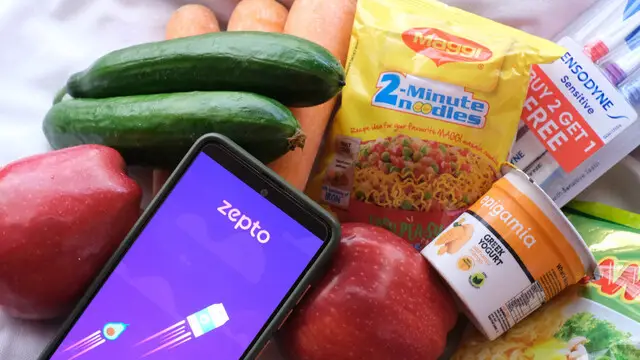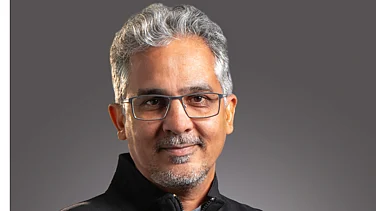For a teenager and an entrepreneur, Aadit Palicha, CEO and co-founder of Zepto, is highly level-headed. While the quick commerce company is on the threshold of joining the unicorn club, he would rather focus on the business on hand than talk about being valued at $900 million.
The 19-year-old tells Outlook Business that while getting such elevated valuation from investors is a great feeling, he does not see it impacting how the company operates daily.
Edited excerpts:
After raising $200 million at a valuation of $900 million, you have inched closer to becoming a unicorn. What does this mean to you?
Advertisement
We have a good chunk of cash on our balance sheet right now, so we are not looking at raising funds in short to medium term. Our focus is on execution heads down, unit economics month-on-month and growth.
Becoming a unicorn is not really part of our discussion, and we honestly don't care about our valuation today or tomorrow. The actual valuation will matter when we get listed; everything in the interim is just an arbitrary milestone with little impact.
Zepto literally zoomed into the market, creating a segment no one knew existed. What convinced you about this model that you left your studies mid-way?
Advertisement
What gave us conviction was data. Kaivalya Vohra (Zepto's co-founder) and I spent many months iterating the multiple models in the grocery space. Staying alone in Mumbai during the first wave of the pandemic, we were inundated with the challenges of getting groceries. Several offline stores had shut down and online options were taking days to deliver, so we understood there was a severe pain point in online grocery.
Even after months of research, we couldn't find a model with a deep product-market fit that could resolve this. When we experimented with the model that Zepto is today, we saw that reliable, quick deliveries with a fantastic assortment of grocery essentials, fruits and vegetables could work.
When all these pieces came together, our retention numbers went through the roof, frequency of usage almost doubled and Net Promoter Score (NPS) stabilised in the mid to high eighties. We realised it is model customers love and people we spoke to told us, 'We never thought groceries could be delivered in such a frictionless way'. The business grew organically through word of mouth and we will be building Zepto into a generational company for the next decade.
You have founded two start-ups before. Was entrepreneurship always on your mind?
My mother started a business when I was born, so I pretty much grew up with it. I have seen her manage a small team and grow the business daily. That pushed me a bit more towards starting something on my own.
But honestly, when Kaivalya and I started working on the grocery delivery problem in India, we had no intention of starting a business. We loved building our own products for fun and thought of creating something again for the community. However, Zepto took off unexpectedly. While it was about our love for building, entrepreneurship has been a part of my life for quite some time.
Advertisement
What challenges did you face while building Zepto, and even today?
In the early days, finding a product that customers loved was the biggest challenge. It is much easier to have a million people who like your product than 100 people who love it.
So, there were months of pain and near-death experiences when we thought about whether we should give up and shut the company down. But when we started getting customer appreciation and feedback, we knew this was something that should scale immediately.
It was a great learning experience. Would I trade that time for anything in this world? Not at all.
What advantage does Zepto have over fierce competitors like Blinkit, Dunzo and Big Basket Now? And what edge do they have over your company?
Advertisement
Quick commerce is a complex business with many moving parts. Being a focused vertical player has given us an advantage.
We have outgrown other legacy brands because we focused a lot on execution. If we continue to execute better, we will win. If not, we will lose.
It's all about how brilliant your customer execution and capital efficiency are and how you can squeeze growth month on month. Pure play execution is everybody's advantage and everybody's disadvantage.

Zepto claims its average delivery distance from pick-up point to the drop-off location is 1.7 kilometres, which is much lower than other hyper-local players.
10-minute deliveries in India's crowded cities with heavy traffic isn't easy. How do you retain your delivery personnel considering strikes by delivery personnel are becoming frequent?
Advertisement
It's a misconception that quick commerce is about fast-speed delivery–the reality is that 10-minute deliveries are about short distances and not fast speeds. Our average delivery distance from the pick-up point to the drop-off location is 1.7 kilometres, significantly lower than any other hyper-local player in the country.
If I break down the 10-minute delivery, it takes two minutes to pack the order and give it to the delivery partner (typically done in 60-90 seconds) and eight minutes to travel. To travel 1.7 kilometres within eight minutes, the rider's speed has to be 21-22 kmph, which is much lower than an average biker on the road.
Advertisement
We have 7 per cent higher monthly retention than any other local platform in the country because we can manage short distances incredibly well without fast speeds. The most significant pain point for delivery partners on other delivery platforms is the long distances they must travel, which is taxing in bigger cities.
What incentives do you offer your delivery team?
The beauty of Zepto's model is that you can map to a pick-up point and deliver there if you stay near an area. So, you deliver, work, eat and live in that area, and your home is just a few minutes away.
For food delivery platforms, restaurant owners don't allow riders to come inside the restaurant or sit inside, so they end up sitting out in the rain during the monsoon. We offer some basic amenities like during rains; we have shelters for riders at all our pick-up points.
We also have clean washrooms at all our pick-up points and provide free medical consultations and healthcare insurance for their families. In the future, we plan to have better benefits for our delivery partners, such as education.
We are also helping our riders to grow personally by creating a career path for them. For example, suppose a delivery driver has worked with Zepto for a year with dedication, work ethic and willingness to please customers. In that case, the structure allows them to be promoted to a shift in charge, then a cluster manager, a city-last mile manager and so on.
Which are your biggest markets since you have yet to make a mark in NCR?
While Mumbai continues to be our biggest stronghold, we are also gaining ground fast in other cities. Building upon assortment and expanding to other cities are two independent programmes, and we are doing that simultaneously.
Isn't your platform's inventory range more limited than your rivals?
The inventory range may differ in different pick-up stores. Right now, our focus is to penetrate deeper into the cities we are already functional in. We are also launching operations in cities adjacent to metros or on the outskirts of the metros.
Profitable companies have been able to counter the slowdown with a well-planned road to profitability. What is Zepto's plan in this regard?
When the global markets were at their worst, we raised our current funding round–the Nasdaq lost 500 to 1,000 points a day. It was possible because our unit economics, discipline and rigour are the best in class.
Capital efficiency has been our prerogative since day 1. You can see that not just on a macro level in the revenue ratio and comparison with competitors but also on a micro level.
Mature warehouses and dark stores are getting cash-flow positive much faster than an established supermarket chain. That will continue to be our advantage in the next couple of years until this downturn continues.
How do you balance your cash burn?
On a per order basis, we burn two to three times lesser than the next best competitor. That's driven not just out of our own internal efficiency but the decisions that we have taken from a model perspective, managing working capital, managing last-mile cost and the way we have reduced that.















 Just one email a week
Just one email a week